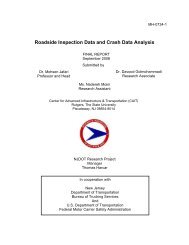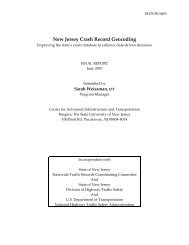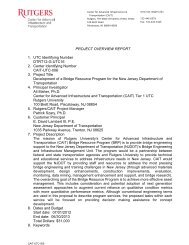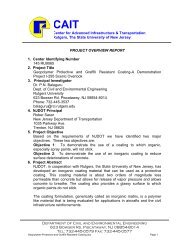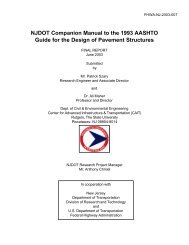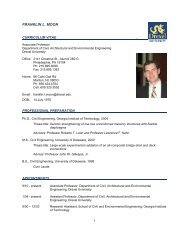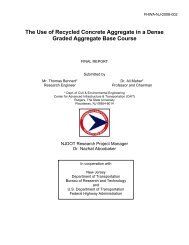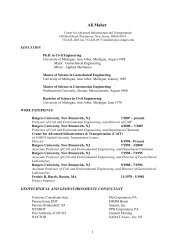Short Line Rail: Its Role in Intermodalism and Distribution
Short Line Rail: Its Role in Intermodalism and Distribution
Short Line Rail: Its Role in Intermodalism and Distribution
You also want an ePaper? Increase the reach of your titles
YUMPU automatically turns print PDFs into web optimized ePapers that Google loves.
Villages/Integrated Logistics Centers; City Logistics; Pooled Shipp<strong>in</strong>g; The Logistics<br />
Campus; Transload/Transflow/Team Tracks; Shared Rights of Way; <strong>and</strong> some creative<br />
Operat<strong>in</strong>g Strategies. These options could easily be worked <strong>in</strong> comb<strong>in</strong>ation with<br />
dem<strong>and</strong> management options such as off-peak pick-up <strong>and</strong> delivery to production <strong>and</strong><br />
consumption facilities, peak pric<strong>in</strong>g <strong>and</strong> toll<strong>in</strong>g, truck-only lanes, etc.<br />
These possible l<strong>and</strong> use <strong>and</strong> rail operat<strong>in</strong>g <strong>and</strong> management options could play<br />
important roles <strong>in</strong> reduc<strong>in</strong>g truck traffic <strong>in</strong> metropolitan areas. However, there is no<br />
evidence that such options are currently be<strong>in</strong>g actively considered <strong>in</strong> address<strong>in</strong>g<br />
metropolitan area congestion issues, at least <strong>in</strong> conjunction with short l<strong>in</strong>e, regional <strong>and</strong><br />
Class I railroads that service those metropolitan areas with significant truck congestion<br />
issues.<br />
The report recommends that a meta-architecture be developed for model<strong>in</strong>g freight<br />
transportation <strong>in</strong> the United States that allows a logical <strong>and</strong> <strong>in</strong>tegrated data flow from the<br />
National level all the way through to the operations <strong>and</strong> management level with<strong>in</strong><br />
metropolitan areas. It is suggested this meta-architecture <strong>and</strong> the processes for<br />
<strong>in</strong>volv<strong>in</strong>g not only the assorted public agencies <strong>and</strong> officials currently concerned with<br />
transportation plann<strong>in</strong>g <strong>in</strong> the United States, but also those from the private sector, be<br />
built around recommendations conta<strong>in</strong>ed <strong>in</strong> Transportation for Tomorrow <strong>and</strong> modifications to<br />
the Metropolitan Transportation Plan process.<br />
Four metropolitan areas are identified that may provide good base-case pilot project<br />
sites for test<strong>in</strong>g, at least the modifications <strong>in</strong> the MTP process with explicit short<br />
l<strong>in</strong>e/regional <strong>and</strong> Class I railroad participation <strong>in</strong> evaluat<strong>in</strong>g possible rail-oriented options<br />
<strong>in</strong> solv<strong>in</strong>g metropolitan freight congestion issues. The possible pilot project sites<br />
<strong>in</strong>clude: Chicago-Northwestern Indiana <strong>and</strong> Dallas-Fort Worth for the large metropolitan<br />
areas. These two areas provide contrasts <strong>in</strong> population growth, while each has<br />
extensive dest<strong>in</strong>ation traffic, as well as through traffic travers<strong>in</strong>g the metropolitan area.<br />
For the smaller metropolitan areas – Portl<strong>and</strong>-Vancouver (OR-WA) <strong>and</strong> Providence-<br />
Pawtucket-New Haven-Meriden-Bridgeport-Milford – similarly provide contrasts <strong>in</strong><br />
population growth rates, while both have significant levels of dest<strong>in</strong>ation traffic.<br />
11



